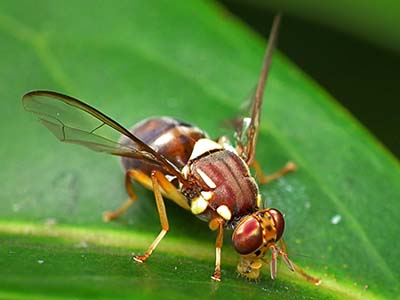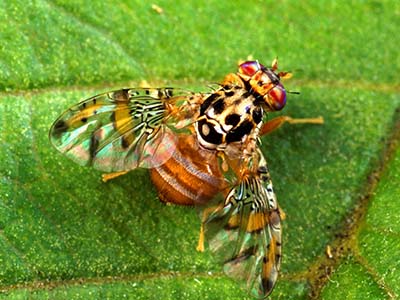Keeping Qfly and Medfly apart requires national cooperation
20 March 2019
The two pest fruit flies affecting horticulture in Australia are the Queensland fruit fly (Qfly), which only occurs in the eastern states and Northern Territory, and the Mediterranean fruit fly (Medfly) which occurs only in parts of Western Australia.
The two species are kept apart by the Nullarbor, with quarantine measures being placed on passengers and produce, and eradication activities instigated in South Australia when either species is detected.
“This is referred to as the ‘east–west principle,” explained Darryl Barbour, Manager, National Fruit Fly Council, at Plant Health Australia.
“While both fruit flies can be very damaging, maintaining this separation is vital for maintaining access to markets and favourable export conditions.”
Cold treatment is required by some markets before accepting imports from areas where fruit flies occur. Australian research has shown that a shorter treatment is appropriate for areas where only Qfly occurs.
“An outbreak of Medfly in the eastern states could mean that longer cold treatments are required prior to export. This could delay access to markets and incur additional costs”, said Darryl.
“Outbreaks could also lead to a temporary loss of market access which would have a major impact on industries”.
What’s the difference?


Qfly is an Australian native species associated with rainforest and coastal plants. However, as a variety of fruits were introduced and grown commercially in Australia, this pest moved onto these new and abundant food sources. It was observed as a pest of cultivated fruit trees from the late 1800’s. Alongside commercial hosts, Qfly can be found in a variety of native and introduced host plants.
Medfly is an important global pest of fruit production and was introduced to Australia in the 1890s, possibly with imported fruit. While Medfly spread quickly and was at one time found in New South Wales and Victoria, it has not been in the eastern states since 1953.
Both species have a wide host range and the maggots or larvae of both species look superficially similar. However, Darryl explained that the adults are visually distinct.
“The Medfly is the slightly smaller of the two species, with a light brown body and characteristic speckled or mottled wings, while the Qfly has a reddish-brown body with characteristic yellow markings,” he said.
Maintaining the separation
“Keeping these two species apart and protecting domestic and international markets is a task that requires everyone’s input,” emphasised Darryl.
At the commercial level, fruit that is moved interstate and between major regions will be subjected to quarantine treatments and inspection.
Obtaining either a Plant Health Certificate or certification under the Interstate Certification Assurance scheme is important, as demonstrating compliance builds confidence in domestic markets and shows our international trading partners that these pests are being well managed.
“Members of the public also need to do their part,” said Darryl.
“Whether travelling for business or leisure, the important message is to comply with biosecurity instructions.
“Travellers should not carry fruits or vegetables and must dispose of any before reaching a biosecurity inspection point.
“Even a single piece of fruit could be giving fruit flies a free ride and placing at risk $6 billion of horticultural production and $940 million of exports that are potentially impacted by fruit flies.”
“This highlights the importance of supporting a national approach to managing key pests and diseases, even if they don’t occur in your production region.”
The movement of pests like fruit flies can affect trade and disrupt established pest control programs, so effective management is in everyone’s interest.
For more information about fruit fly management explore the resources on this website and for more information about interstate quarantine visit interstatequarantine.org.au.